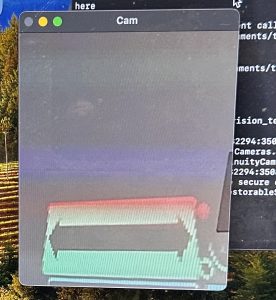Progress Update:
This week I went back to work on object tracking. I tried multiple methods including SURF, ORB and SIFT, but found that SIFT worked the best. The biggest difference between my SIFT algorithm from a few weeks ago and this recent change is the use of a perspective transform to get a better boundary around the target object.
I am also working on region detection with the projector. Since we are using a light projector, the camera will only see the color that is absorbed by the region in the projection at a given time. The projector scans each single channel color one by one and the corresponding color in the projection screen will show in the camera frame. For example, if the image I am looking for in the projection is red and the projector is scanning for red, the camera will see the red image. But if the projector is scanning for green or cyan, the camera will not see the image.
Since the frame rate is consistent and I know when the projector will be scanning for each color, I am able to factor these properties into determining the correct time to capture the frame and see the target image.

Projection as seen by the camera

Image displayed on the table
Schedule: on track!
Next Week:
- continue to test region detection
- continue to improve gesture tracking/recognition latency
- continue to test computer vision with full system
As you’ve designed, implemented and debugged your project, what new tools or new knowledge did you find it necessary to learn to be able to accomplish these tasks? What learning strategies did you use to acquire this new knowledge?
With this project, I was able to explore new methods in computer vision to detect and track both objects and gestures. It was important to be able to throughly read the documentation from the source libraries, but also be able to follow advice and guidance from public forums. I learned to use various online resources such as YouTube videos, Chat GPT and articles to debug my issues and learn of new techniques.
